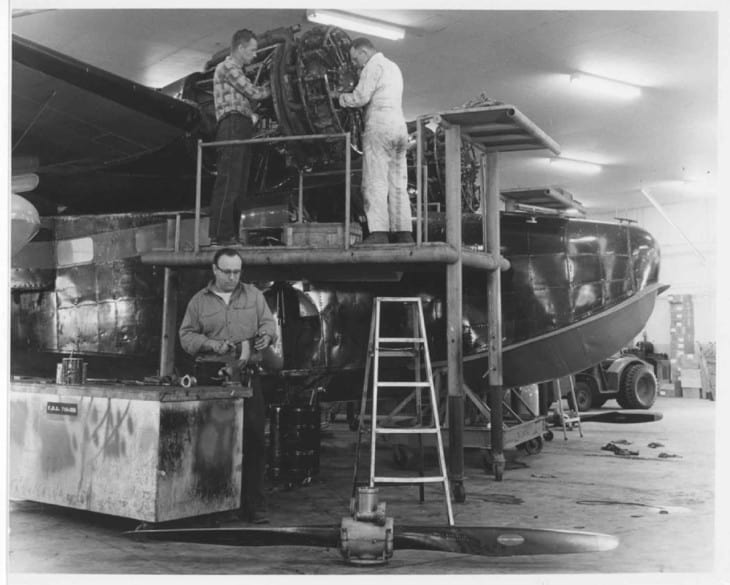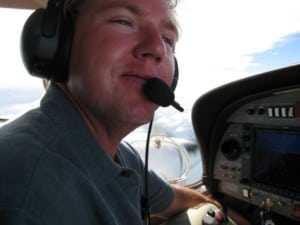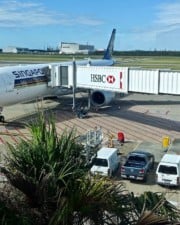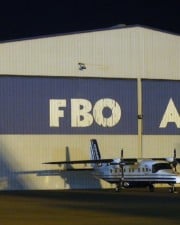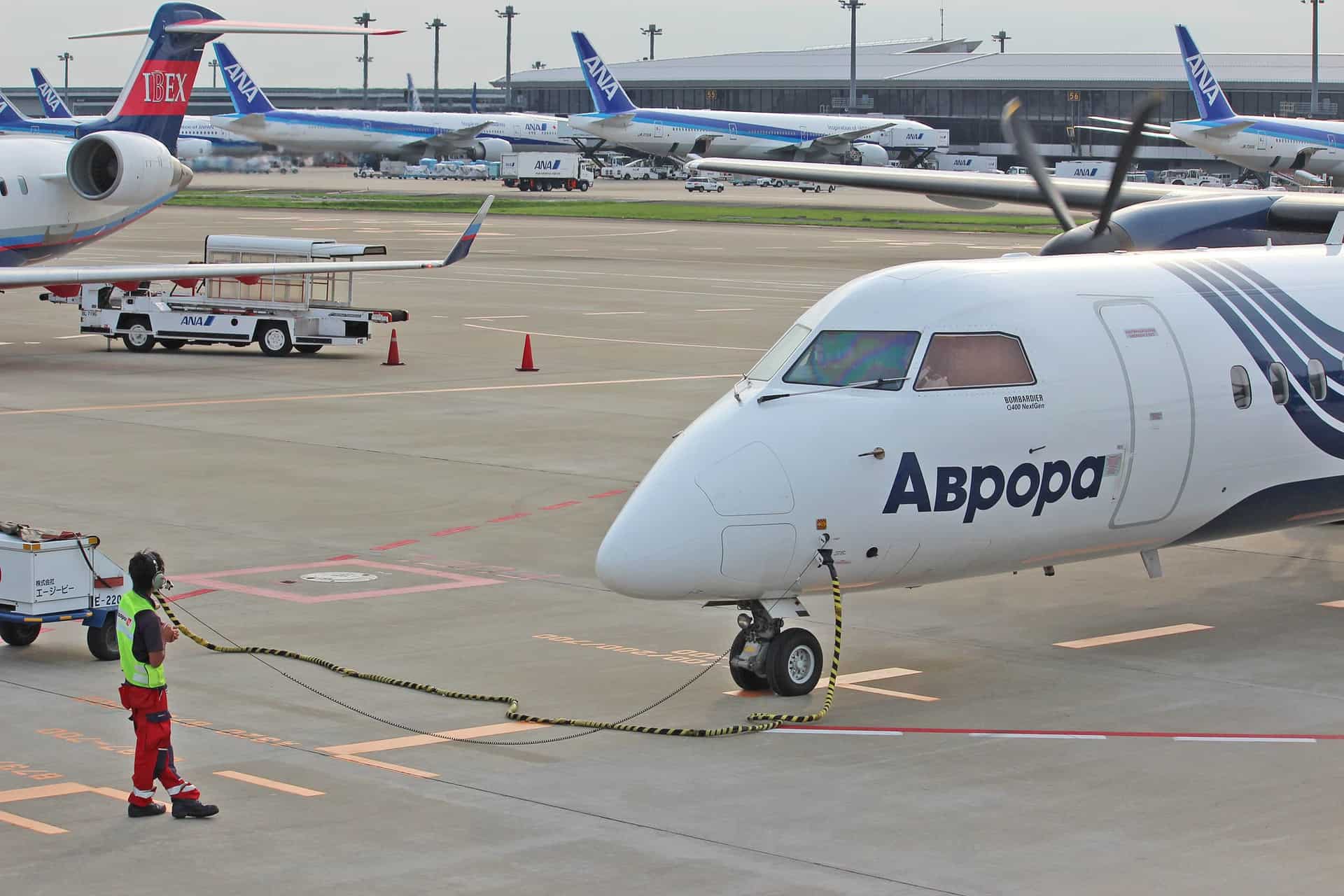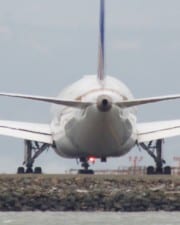Around aviation, you may hear the term MRO often. The term has been generalized to refer to many different organizations in aviation, but all of them revolve around the maintenance of aircraft.
MRO stands for maintenance, repair, and overhaul. This label is used in aviation to indicate a major maintenance facility, be it part of an airline, a flight department, a general aviation facility, or in the military.

Table of Contents
What is an MRO Operator?
Usually, an MRO is a facility where aircraft are taken to be serviced. There are many different types of these facilities at airports around the world. Usually, the maintenance being done is on the airframe or the engines.
The term can be used for components of the airplane too. Since you could remove a radio or GPS from the cockpit and send it out for service, some aviation MRO businesses are off-airport. Avionics, radios, and accessories all have their own maintenance, repair, and overhaul requirements.
Besides describing the physical place where work is done, the word is also used to talk about the action of performing maintenance. For example, a scheduler might say that an aircraft is “down for MRO.”
MRO encompasses three types of maintenance
- Maintenance is work done on an aircraft to keep it in tip-top shape. This is like changing the oil in your car. Nothing is wrong with the plane, but certain things have to be done to keep it working.
- Repairs happen after something breaks. Examples could be a failed instrument, or controls not responding as they should. It could also be used to describe major structural repairs, like dents or broken windows.
- Overhauls are when aircraft are taken apart piece and piece, inspected, and put back together again. This is an essential part of keeping an aircraft airworthy since it enables mechanics to see what’s going on below the surface. They inspect for unusual wear and tear and hidden damage and replace any components that aren’t within specs.
Types of MRO Organizations
The mobile nature of aircraft means that they can travel to have maintenance work done in all but emergency situations,. That means that companies can set up their own hubs and bases, or operators can utilize facilities that have made good reputations for themselves.
Independent Repair Stations
Outside of airlines, independent repair stations are the most prevalent types of MRO. These range from very large to tiny shops. Large operators are busy shops at major airports that work on a wide array of aircraft, from helicopters to corporate jets.
Small independent operators usually work at secondary airports and can be as informal as the local certified mechanic who works on the planes based there.
FBOs
Fixed-based operators, or FBOs, are the businesses based at an airport. FBOs provide line support, like fueling and parking, for resident and transient aircraft. Since they are the primary gateway to the airport for planes and pilots, they usually have close ties to the local mechanic’s shop.
Several FBOs own their own MRO facility. It is usually operated as a separate division of the organization. An excellent example of this is the Banyan FBO at the Fort Lauderdale Executive Airport in Fort Lauderdale, Florida.
Banyan is one of the nicest FBO facilities you’ll find, and their ramp area is enormous. They have line service at their full-service, luxury terminal building. They have adjacent storage hangers, and their MRO facilities offer airframe and engine servicing, structural repairs, and avionics.
Commercial Airline Hubs
Airlines operate their aircraft hard. A common saying is that an aircraft sitting on the ground isn’t making any money. Most major carriers cannot be subject to the schedules and charges put upon them by a separate company, so it makes sense for them to do their own maintenance.
Nearly every major airline has an MRO division. These may be organizationally entirely separate companies, or they may be divisions under one name. Either way, doing their own maintenance makes enormous financial sense for airlines.
Major airlines usually have only a few major bases for MRO operations. Aircraft are then scheduled in and out of that hub when they are due for work.

Regional Airline Maintenance
Regional airlines operate slightly differently than the major airlines in that they tend not to have one central hub. They are also smaller organizations that operate fewer aircraft on slimmer profit margins.
The result is that regional airline MRO facilities are more spread out and smaller than their major airline counterparts. They are more likely to lease space from FBOs at secondary airports.
Corporate Operators
Many corporate flight departments also operate their own MRO facilities. This can be as simple as hiring a few certified mechanics to work on their aircraft. In some instances, at bigger flight departments, these may be sizeable organizations.
Military Maintenance Facilities
As you would expect, the military runs its own MRO facilities all over the world. Manned by service members, these MRO facilities provide all of the same maintenance that civilian aircraft receive.

MRO Certification
In the United States, the FAA certifies repair stations, just like it certifies other air agencies like pilot schools, training centers, and maintenance technician schools.
MRO facilities can only work on aircraft for which they’ve been certified under FAR Part 145. Repair Stations can be certified to work on airframes, powerplants, propellers, radios/avionics/instruments, or accessories.
A regulatory body, like the FAA, sets most safety standards that MRO businesses use. Government regulators around the world require registered aircraft to meet specific requirements and have particular inspections.
Who Uses MROs?
Many MRO businesses are wholly owned by commercial airlines or their parent companies. Air France Industries, British Airways Engineering, and Lufthansa Technik are all examples of major MRO companies. Some, like Delta TechOps, operates as a separate division within the airline.
Even though these organizations are built to support the airlines they are affiliated with, most welcome MRO business from other sources. These facilities are certified to work on particular aircraft, and they are the operations of choice for smaller airline operators and corporate airliners.
General aviation aircraft usually use independent repair stations or FBOs. These are the most common facilities at smaller secondary airports where these aircraft operate. These facilities typically specialize in particular types of aircraft, but usually, any repair station can be used by any aircraft. Most general aviation aircraft use the MRO closest to them.
MRO businesses have to be flexible and accommodating if a transient aircraft breaks down at their airport. The aviation industry is a small community, and most operators will work to help out stranded aircraft.
MRO Aviation Jobs
Like any major organization, MROs are big businesses made up of many different departments.
The line workers at MROs are A&P Mechanics (airframe and powerplant). Most A&Ps specialize in a specific area, be it turbine engines or avionics. Senior mechanics are called IAs, meaning they have their “Inspector Authorization” and can check the work done by other A&Ps.
But beyond the mechanics, there are many other functions in the MRO. Mangers and scheduling departments take reservations and organize timeframes; parts departments work to ensure their shelves are stocked, and that parts needed for repairs arrive quickly. Safety departments work to ensure their workers are safe and their work is top-notch.
Of course, every company is different. But just like airlines are large multi-national companies made up of far many employees beyond their pilots, MRO operators are big companies made up of far more than just mechanics.
Related Posts
